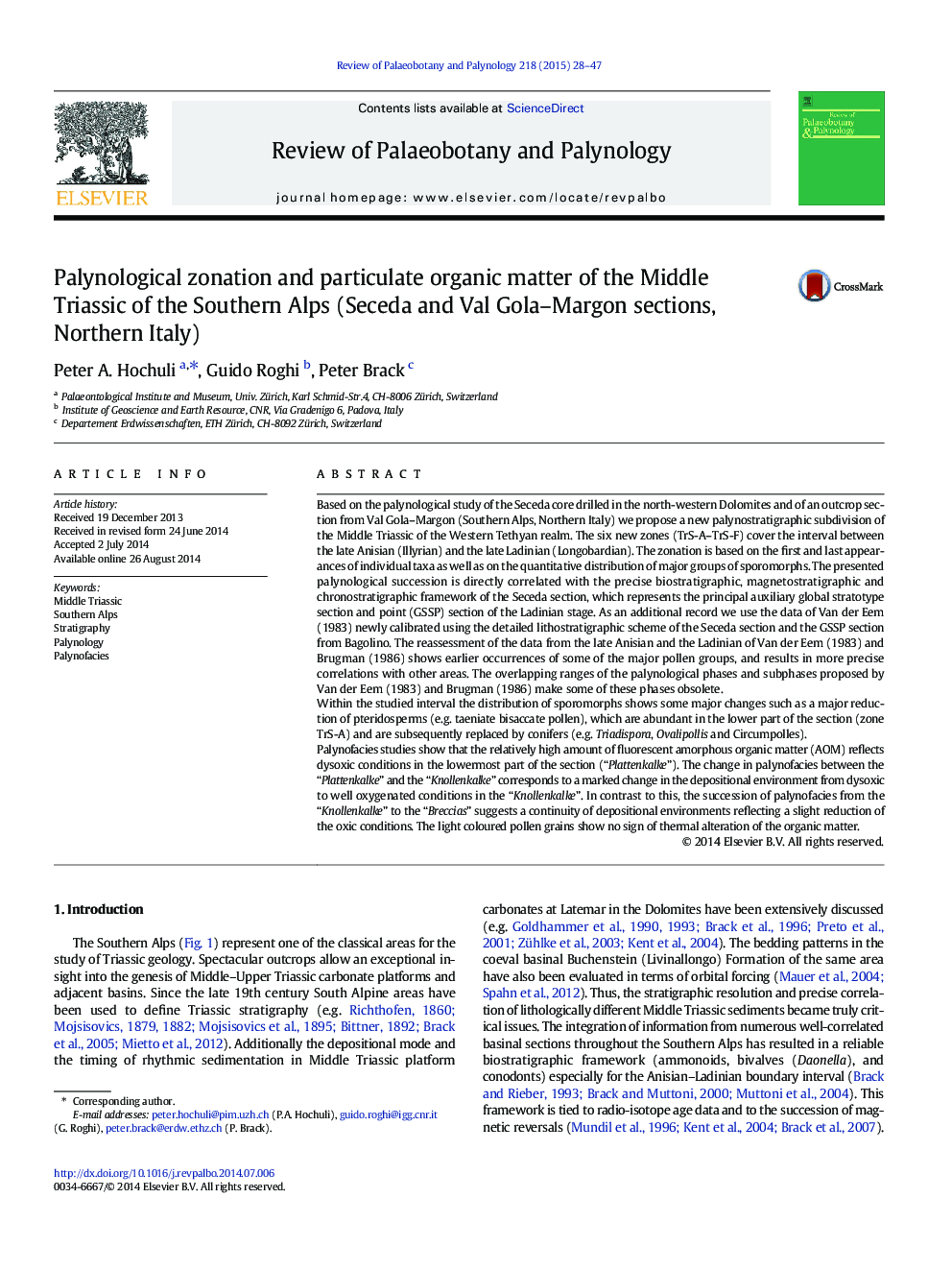| کد مقاله | کد نشریه | سال انتشار | مقاله انگلیسی | نسخه تمام متن |
|---|---|---|---|---|
| 4750180 | 1642480 | 2015 | 20 صفحه PDF | دانلود رایگان |

• Review of Middle Triassic stratigraphy of the Southern Alps (Italy)
• Depositional environment assessed by palynofacies study
• Definition of 6 precisely calibrated palynological zones
• Calibration of the classical palynological subdivision (Van der Eem, 1983 - phases)
Based on the palynological study of the Seceda core drilled in the north-western Dolomites and of an outcrop section from Val Gola–Margon (Southern Alps, Northern Italy) we propose a new palynostratigraphic subdivision of the Middle Triassic of the Western Tethyan realm. The six new zones (TrS-A–TrS-F) cover the interval between the late Anisian (Illyrian) and the late Ladinian (Longobardian). The zonation is based on the first and last appearances of individual taxa as well as on the quantitative distribution of major groups of sporomorphs. The presented palynological succession is directly correlated with the precise biostratigraphic, magnetostratigraphic and chronostratigraphic framework of the Seceda section, which represents the principal auxiliary global stratotype section and point (GSSP) section of the Ladinian stage. As an additional record we use the data of Van der Eem (1983) newly calibrated using the detailed lithostratigraphic scheme of the Seceda section and the GSSP section from Bagolino. The reassessment of the data from the late Anisian and the Ladinian of Van der Eem (1983) and Brugman (1986) shows earlier occurrences of some of the major pollen groups, and results in more precise correlations with other areas. The overlapping ranges of the palynological phases and subphases proposed by Van der Eem (1983) and Brugman (1986) make some of these phases obsolete.Within the studied interval the distribution of sporomorphs shows some major changes such as a major reduction of pteridosperms (e.g. taeniate bisaccate pollen), which are abundant in the lower part of the section (zone TrS-A) and are subsequently replaced by conifers (e.g. Triadispora, Ovalipollis and Circumpolles).Palynofacies studies show that the relatively high amount of fluorescent amorphous organic matter (AOM) reflects dysoxic conditions in the lowermost part of the section (“Plattenkalke”). The change in palynofacies between the “Plattenkalke” and the “Knollenkalke” corresponds to a marked change in the depositional environment from dysoxic to well oxygenated conditions in the “Knollenkalke”. In contrast to this, the succession of palynofacies from the “Knollenkalke” to the “Breccias” suggests a continuity of depositional environments reflecting a slight reduction of the oxic conditions. The light coloured pollen grains show no sign of thermal alteration of the organic matter.
Journal: Review of Palaeobotany and Palynology - Volume 218, July 2015, Pages 28–47